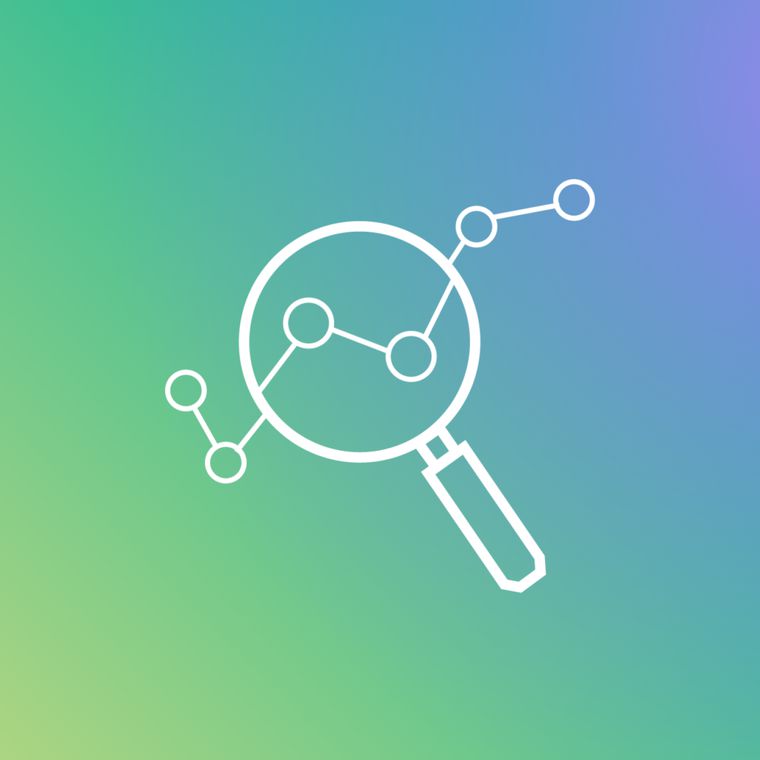5 Best Practices for Implementing User and Entity Behavior Analytics
Implement user and entity behavior analytics with these best practices for stronger threat detection.
July 31, 2025
Signature-based security systems that once formed the backbone of enterprise protection now face sophisticated adversaries who exploit normal user behaviors to bypass detection entirely. Enter User and Entity Behavior Analytics, which is a machine learning-powered approach that promises to revolutionize threat detection by establishing behavioral baselines for every user and entity across your network.
UEBA monitors the subtle patterns of servers, applications, devices, and human users, creating a comprehensive behavioral map designed to surface the anomalies that signal insider threats, account compromise, and lateral movement. The technology represents a compelling evolution from reactive security monitoring to proactive threat hunting. However, UEBA deployments struggle to deliver on their potential, leaving organizations vulnerable to the very threats they sought to prevent while wrestling with implementation challenges that transform cutting-edge security tools into costly operational burdens.
That said, here are five best practices for implementing UEBA across organizations.
Best Practice 1: Start with Clear, High-Impact Use Cases
Behavioral analytics delivers the greatest value when it begins with a clear focus on a few high-impact threats, rather than trying to analyze every log from day one. Targeted use cases drive faster results, clearer metrics, and stronger executive alignment.
For instance, projects tied to specific, high-risk challenges consistently outperform broad, undefined deployments. Begin by selecting use cases with clear financial, operational, or compliance implications, such as:
Insider threats and data exfiltration
Account takeover and credential misuse
Brute force or password-spraying attempts
Privilege escalation or creation of unauthorized admin accounts
Sensitive data handling subject to regulations like HIPAA or SOX
For each scenario, you need to define measurable goals. A common objective might be to reduce insider threat dwell time over a set period, such as a quarter. Tailor your targets to reflect the organization's priorities and risk appetite. These metrics not only guide implementation but also help secure ongoing executive support.
Link Data, Analytics, and Accountability
Every use case should include a clear roadmap that connects the threat to required data sources, analytic techniques, desired outcomes, and responsible stakeholders. For example, you need to consider the following:
Pain point: Unmonitored upload of customer data
Data sources: Cloud storage logs, proxy activity, HR identity data
Success metric: No unauthorized data transfers within 30 days
Executive owner: Chief Privacy Officer
This structured approach keeps the engineering team focused on relevant telemetry, reduces unnecessary noise, and ensures clear accountability for results. Once use cases are defined, the next step is to integrate the supporting data into your existing security infrastructure to power the behavioral models.
Best Practice 2: Integrate UEBA with Your Existing Security Stack
Integrating behavioral analytics into your existing security infrastructure is essential for turning isolated alerts into actionable intelligence. This connection provides the behavioral context needed to understand which anomalies matter and why, so your team can focus on real threats instead of chasing noise.
Connect Core Data Sources for Full Visibility
Start by integrating the systems that reflect everyday user behavior:
SIEM log repositories
IAM or SSO directories
Endpoint detection and response agents
Cloud email and collaboration platforms
SaaS and infrastructure audit logs
HRIS databases for role and employment status
These data feeds allow behavioral analytics tools to correlate anomalies with identity, role, access level, and historical activity. The more context provided, the more accurately the system can distinguish between legitimate actions and suspicious behavior. Modern platforms increasingly embed UEBA directly within SIEMs, reinforcing that without access to a complete data fabric, analytics alone cannot scale effectively.
Avoid Common Integration Challenges
Despite the value, integration can be undermined by avoidable missteps, such as API mismatches that drop essential data, duplicate user identities that skew behavioral baselines, or misaligned timestamps that disrupt event correlation.
To prevent these issues, take a disciplined approach:
Inventory data sources and designate ownership
Enable reliable log forwarding
Normalize schemas to a unified format
Validate that alerts map accurately to users and assets
When integration is executed thoughtfully, behavioral analytics can immediately surface meaningful risk signals. Feeding the system rich, contextual data helps models quickly differentiate normal workflows from potential threats, laying the groundwork for smarter, more efficient detection.
Best Practice 3: Prioritize Contextual Data Quality
The effectiveness of behavioral analytics depends entirely on the quality of the data it processes. Clean, consistent, and well-contextualized inputs are essential for building accurate behavioral baselines, detecting meaningful anomalies, and reducing false positives.
To maintain strong data quality, focus on three core areas:
Identity Resolution: Unifying user activity across platforms is critical to understanding behavior in context. Without this, disparate events may be misinterpreted or overlooked.
Asset Classification: Tag systems and data by sensitivity and business value to help distinguish between routine behavior and actions that warrant investigation.
Time Synchronization: Align timestamps across systems using tools like Network Time Protocol to ensure accurate event correlation and timeline reconstruction.
Poor data quality can lead to a flood of irrelevant alerts, overwhelming analysts and eroding trust in detection systems. To mitigate this, implement schema validation and normalization processes that standardize data formats from various sources. Automated contextual enrichment, such as adding metadata about sender reputation, user privilege level, or system criticality, further sharpens threat detection.
Ensuring data integrity also involves maintaining consistent event timing and resolving identity ambiguities. These practices strengthen your behavioral analytics framework, allowing it to operate on reliable, enriched data.
Prioritizing data quality lays the groundwork for a more accurate and efficient detection system, helping security teams stay focused on genuine threats while minimizing noise.
Best Practice 4: Tune Risk Models to Business Impact
Risk scores are only meaningful when they reflect the actual financial, operational, and compliance risks tied to your assets and users. Prioritizing threats based on business context, rather than anomaly severity alone, ensures that analysts focus their efforts where it matters most.
Build a Business-Aware Risk Scoring Framework
Begin with a detailed asset inventory that classifies systems by criticality and data sensitivity. Assign greater weight to anomalies involving high-value environments, such as PCI-regulated platforms or production databases, while deprioritizing events tied to low-risk assets like test servers.
Incorporate user context by comparing behavioral deviations against peer baselines. For example, a finance employee transferring large volumes of data after hours should trigger more scrutiny than a scheduled backup performing the same action.
Risk thresholds should be dynamic and recalculated every 30 days to adapt to changing usage patterns and seasonal fluctuations. For regulated environments, tighten alert thresholds further based on compliance requirements. HIPAA-covered systems, for instance, may warrant more sensitive detection settings in line with internal risk assessments.
Regular reviews with business stakeholders help maintain alignment as priorities shift due to organizational changes, such as mergers, product rollouts, or new regulatory obligations.
Well-calibrated models reduce noise and elevate the few incidents that truly pose a risk to business continuity, enabling smarter triage and setting the stage for continuous security improvement.
Best Practice 5: Build a Continuous Feedback Loop
A well-structured feedback loop is essential to maintaining the accuracy of behavioral analytics and ensuring your SOC stays focused on the threats that matter. As users, environments, and attacker tactics evolve, this loop helps your models adapt, preventing drift and reducing noise over time.
Turn Analyst Feedback into Model Precision
Without regular feedback, false positives can overwhelm analysts and erode trust in detection systems, which is a common challenge with behavior-based analytics. The solution is a closed-loop process that turns every alert outcome into an opportunity for model refinement, using four key stages:
Ingest: Behavioral alerts automatically generate tickets in your SIEM or SOAR, based on alert severity and organizational policy.
Verdict: Analysts review and classify each alert as malicious, benign, or inconclusive.
Retrain: These verdicts are fed back into the system, triggering nightly model updates that adjust thresholds and fine-tune detection accuracy.
Measure: Dashboards update in real time, showing the impact on key metrics like Mean Time to Detect (MTTD), false-positive rates, and triage workload.
Track Metrics That Matter
Prioritize three performance indicators:
Mean Time to Detect should decline as the system hones in on real threats more quickly.
False-Positive Rate must remain below analyst's tolerance to prevent fatigue and maintain focus.
Analyst Triage Time should steadily decrease as models surface only the most relevant anomalies.
Adopt a Sustainable Review Cadence
Balance speed and oversight with a structured cadence:
Conduct weekly false-positive reviews to fine-tune detection accuracy.
Recalibrate risk scores monthly to reflect evolving threat patterns.
Present quarterly executive briefings to demonstrate business impact and improvement trends.
When executed consistently, this feedback loop evolves from reactive maintenance into proactive threat hunting, reducing noise, accelerating investigations, and delivering measurable security value.
Putting Behavioral Insights into Action with Abnormal
Abnormal applies a cloud-native, AI-first approach to effectively stop business email compromise, account takeover, and insider threats. The platform delivers consistent results by combining behavioral intelligence with precise threat detection.
With fast, API-based deployment that integrates seamlessly into existing environments, without disrupting mail flow, Abnormal enables organizations to enhance protection without added complexity. Its behavioral models evolve continuously, learning from new communication patterns and refining detection accuracy through an ongoing feedback loop.
This focus on seamless integration, adaptive learning, and data-driven accuracy makes Abnormal an ideal solution for organizations aiming to scale behavioral analytics and strengthen their email security posture.
To see how Abnormal can work in your environment, request a personalized demo today.
Related Posts
Get the Latest Email Security Insights
Subscribe to our newsletter to receive updates on the latest attacks and new trends in the email threat landscape.


